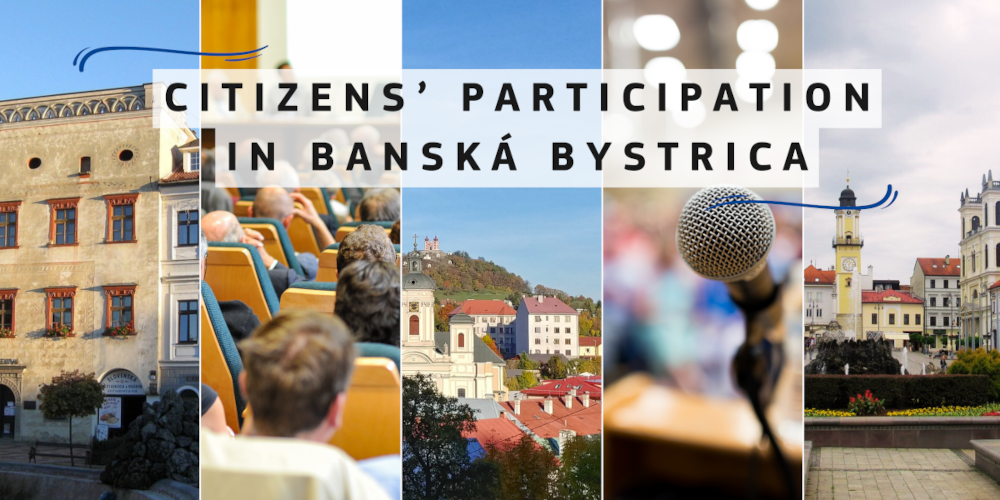Panorama
Citizens’ engagement: A deep dive into Banská Bystrica’s Ideathon initiative
- 20 Dec 2023
In this interview, we exchange with Ms Kariková Soňa, the person behind Banská Bystrica’s innovative Ideathon. As the coordinator for Open Government, Ms Kariková led the city’s collaboration with the DG REGIO/OECD programme, to involve citizens in shaping the Integrated Territorial Strategy (ITS) for 2021-2027.
Hello Ms Kariková, thank you for accepting to answer our questions. Can you please give us a brief overview of the Banska Bystrica Ideathon initiative and its objectives?
Banska Bystriça joined the DG REGIO/OECD programme with the following aim: to involve citizens in the development and prioritisation of the ITS for the years 2021-2027, as it pertains to the functional urban area of the city. Citizens were able, through a participatory process, to suggest new projects that would, after a round of public voting, be integrated into the ITS. Suggested projects had to fall under three thematic categories: ‘Green city’, ‘Well-managed city’ and ‘Inclusive city’.
The participatory process was based on the Ideathon methodology. We consider Ideathon a ‘dynamic participatory format designed to facilitate an intensive brainstorming session involving individuals from diverse backgrounds, each bringing unique skills and intentions’.
This collaborative gathering serves as a platform for collectively identifying various ideas, solutions, or action plans centred around specific themes. Ideathons typically operate within a defined time frame, spanning several hours to days, and can be executed through either online or offline workshops and consultations. We used both: the online approach was done with the support of the consider.it platform and we organised several in-person Ideathon workshops. In the first phase, we focused on collecting ideas from citizens, and in the second phase we focused on prioritising ideas through the online public voting process.
What motivated the City of Banska Bystrica to partner with the Dialogue Centre and participate in the DG REGIO/OECD programme? What changes in the governance of your city were you hoping to achieve with this project?
The City of Banská Bystrica has previously worked with the Dialogue Centre on some projects. The centre’s expertise and dialogue-facilitation methodology were very useful when organising group discussion processes such as the Ideathon. We were also very interested in gaining some kind of mentorship and expert support from DG REGIO/OECD unit. We felt that being in a partnership with DG REGIO/OECD unit would help our team to gain recognition of our work around a participatory/open government agenda and positively influence the attitudes of the city’s top management towards this agenda. Our expectations were to learn and experiment with the innovative participation methodology, to involve citizens in shaping the strategic development of the city, and to increase top management’s interest in this participatory way of working, with the support of the OECD unit.
How did you ensure that residents stayed interested in the month-long online consultation, and the subsequent month-long voting? What existing structures did you use?
We frequently reminded citizens about theses ongoing processes, mainly through social media.
What did you do to ensure the cooperation of other departments and political leaders?
We frequently communicated about the Ideathon wherever possible, such as at regular internal cross-departmental meetings and ‘mayor’s meetings’. We also invited municipality staff and politicians to our Ideathon workshops and held regular follow-up meetings with municipal staff.
What kind of infrastructure or systems will you put in place to ensure that citizen participation becomes part of the culture of Banska Bystrica?
One initiative we are putting in place is related to the implementation of a digital democracy infrastructure. This work includes developing internal support from the elected officials and other staff members, allocating some budget to the maintenance and installation costs, and building the skills necessary for the coordination team to be fully autonomous with the use of a digital participatory platform, Decidim, and the design of online participatory processes. The first online participatory budgeting process will be launched on the city’s platform in autumn 2024.
What results did the pilot project achieve? What lessons did you learn?
We have learned that external support from important organisations such as DG REGIO and OECD is very helpful and has a good influence on shaping the participatory culture of the city office. It is very useful to speak a lot internally about results, and to meet with different internal staff and the political leadership of the city. To increase the attendance of stakeholders from different sectors at the Ideathon sessions, we had to conduct a diligent analysis and send personalised invitations. Resources did fall short when it came to communication and the organisation of events.
The results include implementation of innovative citizen participation methods in the allocation of cohesion policy funds. We were able to experiment with the operational aspects of organising and facilitating this participation.

